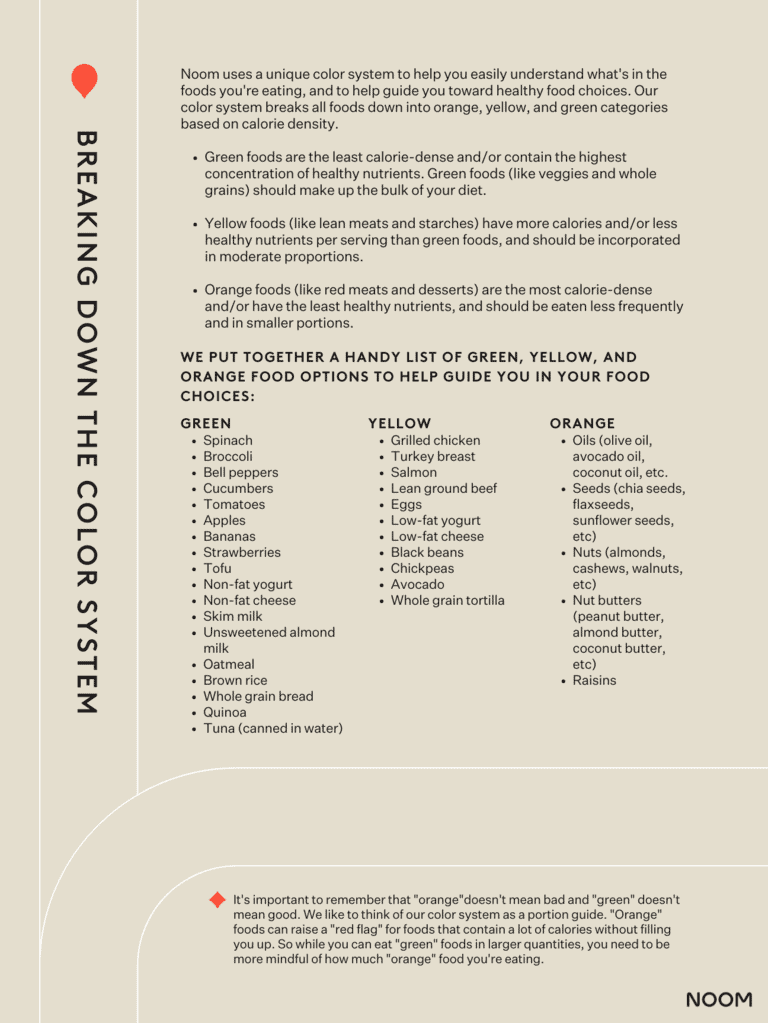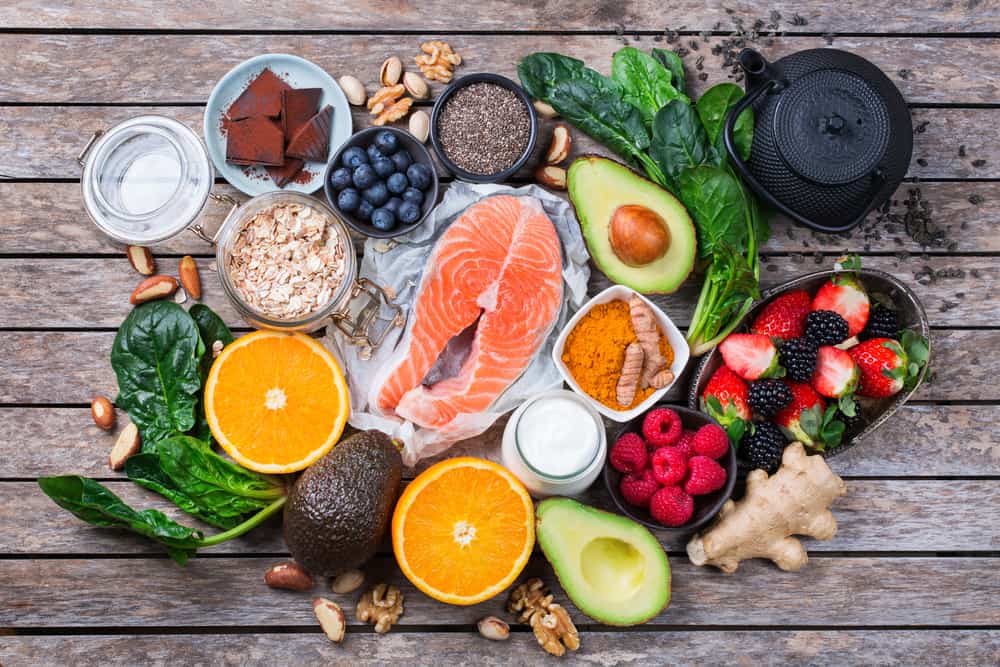
| Green | Yellow | Orange |
|---|---|---|
|
* It’s important to remember that “orange” doesn’t mean bad and “green” doesn’t mean good. We like to think of our color system as a portion guide. “Orange” foods can raise a “red flag” for foods that contain a lot of calories without filling you up. So while you can eat “green” foods in larger quantities, you need to be more mindful of how much “orange” food you’re eating.
Why you can trust us
At Noom, we’re committed to providing health information that’s grounded in reliable science and expert review. Our content is created with the support of qualified professionals and based on well-established research from trusted medical and scientific organizations. Learn more about the experts behind our content on our Health Expert Team page.



 Meaghan Cameron
Meaghan Cameron
 Noom Team
Noom Team

 Shoshana Fishbein
Shoshana Fishbein
 Melissa Kay
Melissa Kay
